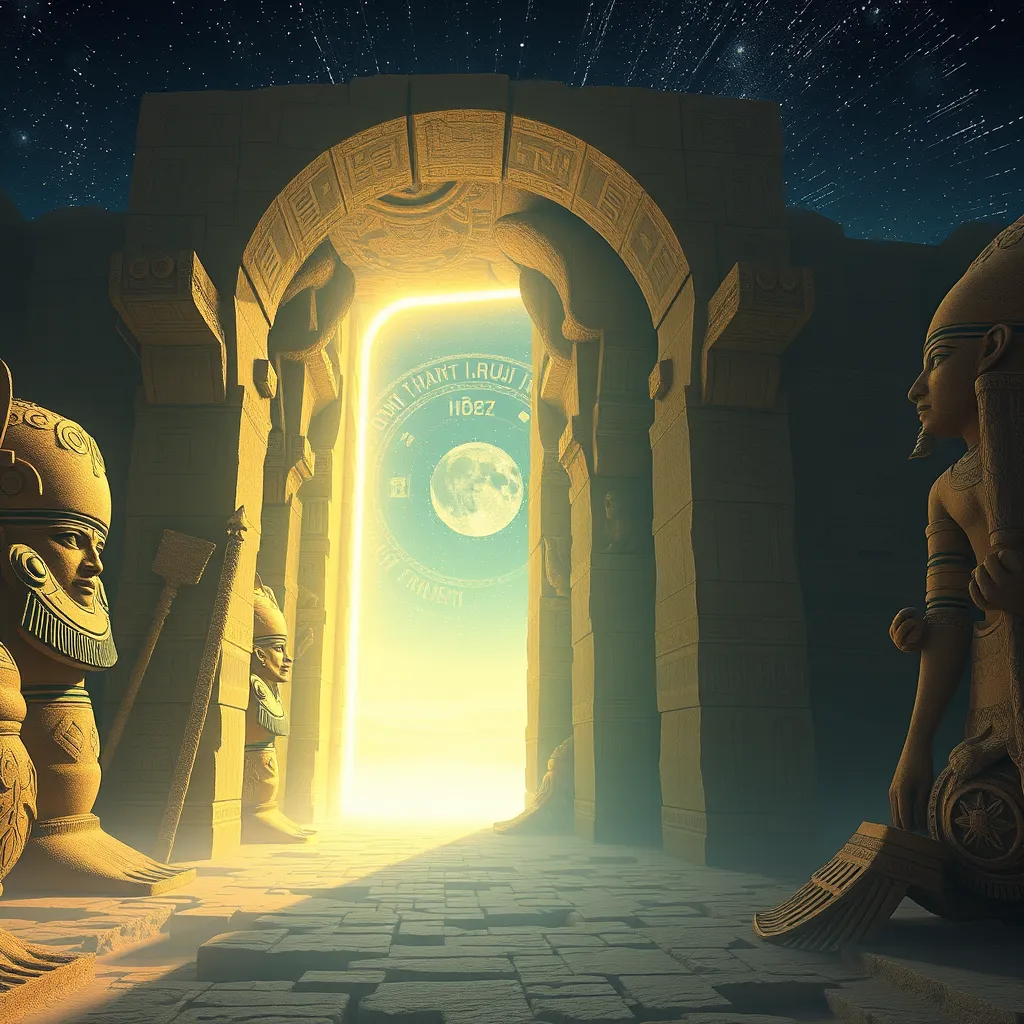The Duat: A Portal to the Beyond
I. Introduction
The Duat, often referred to as the Egyptian underworld, is a profound concept in ancient Egyptian mythology. It serves as a realm of the dead where the souls of the deceased journey after death. The Duat represents not just a physical location, but a complex spiritual landscape that encapsulates the Egyptians’ beliefs about the afterlife, morality, and the divine.
In this article, we will explore the significance of the Duat, examining its historical context, geographical landscape, associated deities, and its role in funerary practices. We will also delve into how the concept of the Duat has influenced modern spirituality and cultural interpretations of the afterlife.
II. Historical Context of the Duat
The origins of the Duat are deeply rooted in ancient Egyptian religion, which dates back to the early dynastic periods around 3100 BCE. Over centuries, the beliefs surrounding the Duat evolved, reflecting changes in religious practices and societal values.
Key texts, such as the Pyramid Texts and the Coffin Texts, provide some of the earliest references to the Duat. These texts describe the journey of the deceased through the underworld, outlining the challenges faced and the deities encountered along the way. The famous Book of the Dead, a guide for the deceased, further elaborated on the Duat, offering spells and instructions for navigating its dangers.
III. The Geography of the Duat
The Duat is often depicted as a vast and complex landscape filled with various geographical features. It includes:
- Rivers: The Nile, which symbolizes the journey, often flows through the Duat, representing the transition between life and death.
- Mountains: These represent obstacles that the deceased must overcome, symbolizing the challenges faced in life.
- Gates: The Duat is said to have numerous gates, each guarded by deities, which the soul must pass through to reach the afterlife.
The significance of space and travel within the Duat is paramount. The deceased’s journey is fraught with trials that test their worthiness, reflecting the ancient Egyptians’ belief in the importance of moral conduct during life.
IV. Deities and Entities of the Duat
The Duat is populated by numerous deities and spiritual beings, each playing a vital role in the journey of the deceased. Some of the major gods associated with the Duat include:
- Osiris: The god of the afterlife and resurrection, Osiris is often depicted as a judge of the dead, overseeing the fate of souls.
- Anubis: The god of mummification and the afterlife, Anubis is responsible for guiding souls through the Duat and protecting them from harm.
Additionally, the weighing of the heart ceremony, where the deceased’s heart is weighed against the feather of Ma’at (truth and justice), is a central aspect of the judgment process in the Duat. This judgment determines whether the soul can enter the afterlife or face annihilation.
V. The Journey Through the Duat
The journey through the Duat is a crucial aspect of ancient Egyptian belief regarding the afterlife. Upon death, the soul embarks on a passage that is both perilous and transformative. Key elements include:
- The Soul’s Passage: After death, the soul must navigate the Duat, encountering various challenges and trials.
- Challenges and Trials: The deceased faces obstacles such as monstrous creatures, treacherous landscapes, and tests of moral character that reflect their earthly life.
- Rituals and Preparations: Elaborate funerary practices, including mummification and burial rituals, were undertaken to ensure a successful journey through the Duat. These preparations were believed to provide the deceased with the necessary tools and protections for their journey.
VI. The Duat in Funerary Practices
The Duat’s influence is evident in ancient Egyptian funerary customs, which were intricately connected to beliefs about the afterlife. Key aspects include:
- Burial Customs: The placement of goods, food, and offerings in tombs was intended to assist the deceased in the Duat.
- Funerary Texts: Texts like the Book of the Dead were included in burial chambers, serving as guides for the deceased to navigate the challenges of the Duat.
- Art and Inscriptions: Tomb paintings and inscriptions often depicted scenes of the Duat, illustrating the journey and the presence of deities, thereby reinforcing the importance of these beliefs in daily life.
VII. The Duat’s Influence on Modern Spirituality
The concept of the Duat has transcended ancient Egyptian culture, influencing modern interpretations of spirituality and the afterlife. In contemporary culture:
- Interpretations: The Duat is often referenced in literature, film, and art, symbolizing the mysterious journey of the soul.
- Esoteric Traditions: Various modern spiritual practices draw on the symbolism of the Duat, reflecting themes of transformation and rebirth.
- Comparisons: The Duat bears similarities to other cultural concepts of the afterlife, such as the Greek Underworld or the Christian Heaven and Hell, emphasizing a universal human concern with what lies beyond death.
VIII. Conclusion
In summary, the Duat stands as a significant portal in ancient Egyptian mythology, representing the complexities of life, death, and the afterlife. Its intricate landscape, populated by deities and spiritual beings, highlights the Egyptians’ profound beliefs about morality and the soul’s journey.
The enduring legacy of the Duat in mythology and spirituality invites reflection on ancient beliefs and their relevance in contemporary discussions about life after death. Understanding the Duat enriches our comprehension of human culture and the timeless quest for meaning beyond the physical world.




